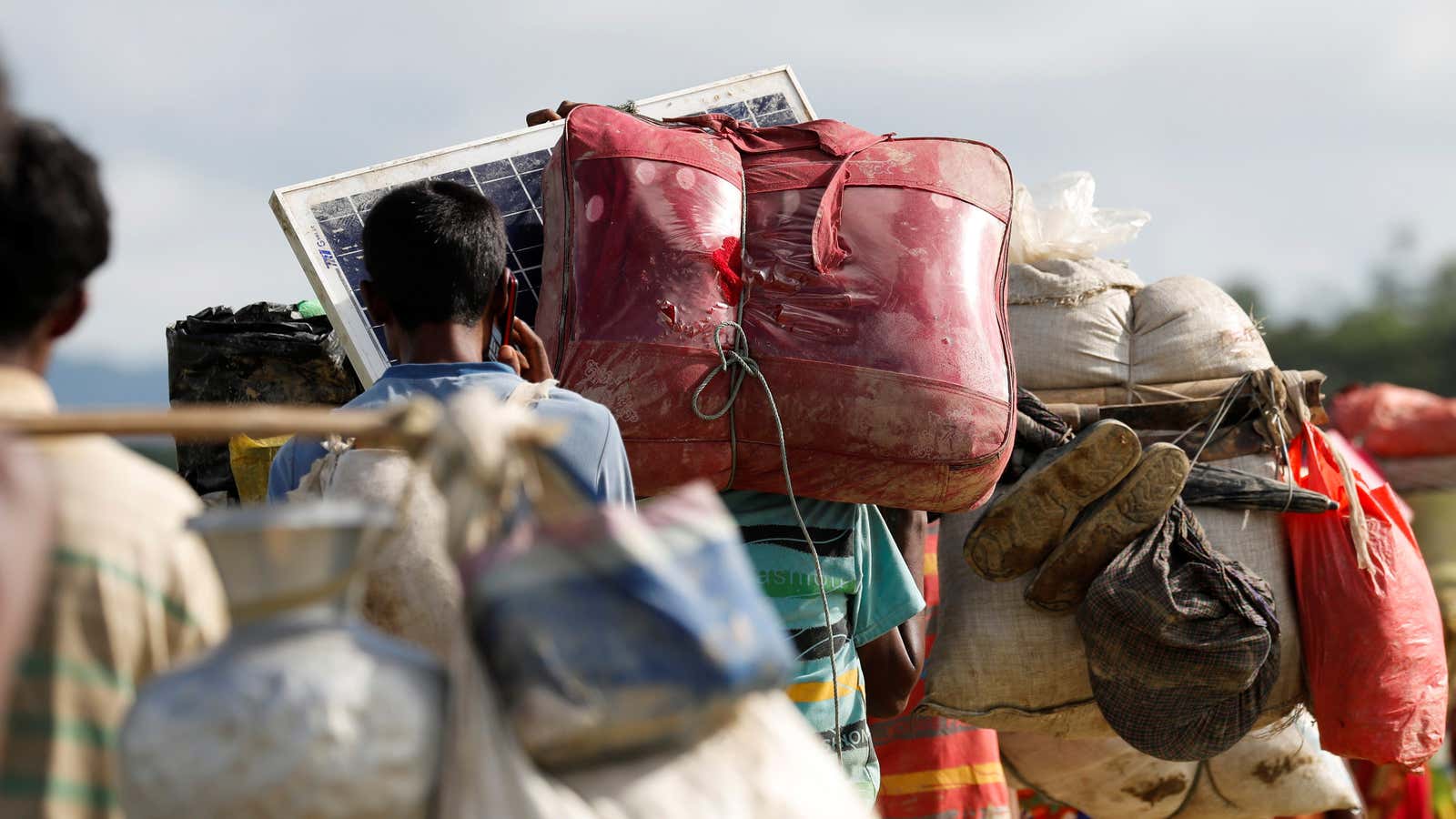As the World Bank’s member countries convene in Washington this week, the institution’s stance on the humanitarian crisis in Myanmar deserves their attention. In its first public response to the exodus that has unfolded in Myanmar, which the United Nations high commissioner for human rights has labeled ethnic cleansing, the World Bank on Sept. 14 issued a maddeningly bland statement about its work in the country, acknowledging the “deterioration in security,” but pointing fingers at no one. The statement reveals a remarkable lack of direction within the institution coming from its largest country shareholders, and particularly the United States.
The bank is in the business of development lending to country governments, and since Aung San Suu Kyi’s release from house arrest in 2010, the World Bank has provided over $2 billion in assistance to the government of Myanmar. Suu Kyi is now state counsellor, after her party won a landslide in elections in 2015, but the military retains power over key areas.
The mix of projects supported by the bank in the country run the gamut from physical infrastructure, to health services access, to a highly popular model of support in development circles called community-driven development. The community development model disburses small amounts of money to many localities, empowering them to decide how to spend it. This model favors the local over the national in a way that has demonstrated success in various settings, but it also makes oversight more difficult.
And here lies just one of the challenges facing the World Bank. How much certainty does the bank have that its projects are safeguarded against abuses in Myanmar today, that no projects are enabling discriminatory treatment toward the Rohingya population?
The Rohingya is a Muslim minority that is without citizenship in Myanmar. They have many times been forced to flee from the western part of the country where they mainly reside. This time around, Rohingya started crossing to Bangladesh for safety in late August after military forces retaliated against their villages in the wake of an attack by Rohingya militants. At least half a million have fled and those who remain behind face persecution.
The World Bank employs a set of rules aimed at safeguarding its projects from reflecting local prejudices and often has gone to extraordinary lengths to achieve “safe” projects in conflict environments. Specifically, the World Bank seeks to ensure that there is “no prejudice or discrimination toward…individuals or communities,” and particularly minority groups, in the conduct of its projects. Three years ago, the bank halted a major health program in Uganda after the country passed a law targeting gay people. At the time, bank officials indicated that the discriminatory law would interfere with the development objectives of the health program. It would be helpful to hear an affirmative statement from the bank about the integrity of its projects in Myanmar right now when it comes to these protections.
But the challenge for the World Bank runs deeper than these project-level concerns and is on full display in the bank’s September statement, which almost refers to the crisis in Myanmar as if it were a natural disaster. The bank has always been at pains to reconcile its “non-political” mandate with actions of its client governments that can range from distasteful to reprehensible to worse. To some degree, an informal and uncomfortable consensus has long held among the bank’s member countries that the bank can tolerate some degree of human rights abuses in a country in the name of achieving development gains along with the assurance that the bank’s own projects would be protected from any wider abuses.
But what happens when a population numbered in the hundreds of thousands is targeted for abuse within a country in which the World Bank operates, and the bank’s client government appears to have some culpability? That is, what happens when the scale of the abuse becomes too hard to ignore?
In these situations, we too often see a finger-in-the-air test to gauge which way the winds are blowing among the World Bank’s member countries. Three years ago those winds blew strongly in favor of cutting off assistance to Russia over the country’s annexation of Crimea. World Bank management did not embrace that step on its own. It was effectively handed to them when G-7 countries signaled (paywall) in the summer of 2014 that they would vote against and effectively block any Russia projects that came to the bank’s board of directors. No Russia projects have come to the bank’s board since then.
So where is the United States today? Apparently silent to judge by the lack of any tough talk or actions coming from the World Bank on Myanmar. Instead, the bank simply “stands ready” to help with any humanitarian response. The bank no doubt can find ways to provide good and useful support on the humanitarian side, particularly by assisting Bangladesh in hosting the Rohingya refugees.
But there is a larger moral imperative to deploy the bank’s muscle in the face of the ethnic cleansing. Its response need not be an entirely blunt instrument, such as the cessation of all assistance to Myanmar. The bank itself points in its September statement to the possibility of reallocating current aid to the country towards support of a humanitarian response, a step that would serve as a rebuke to the Myanmar government. Yet it is unlikely to to take such action until it is insisted on by the bank’s member countries. It’s time for those countries to speak up.
